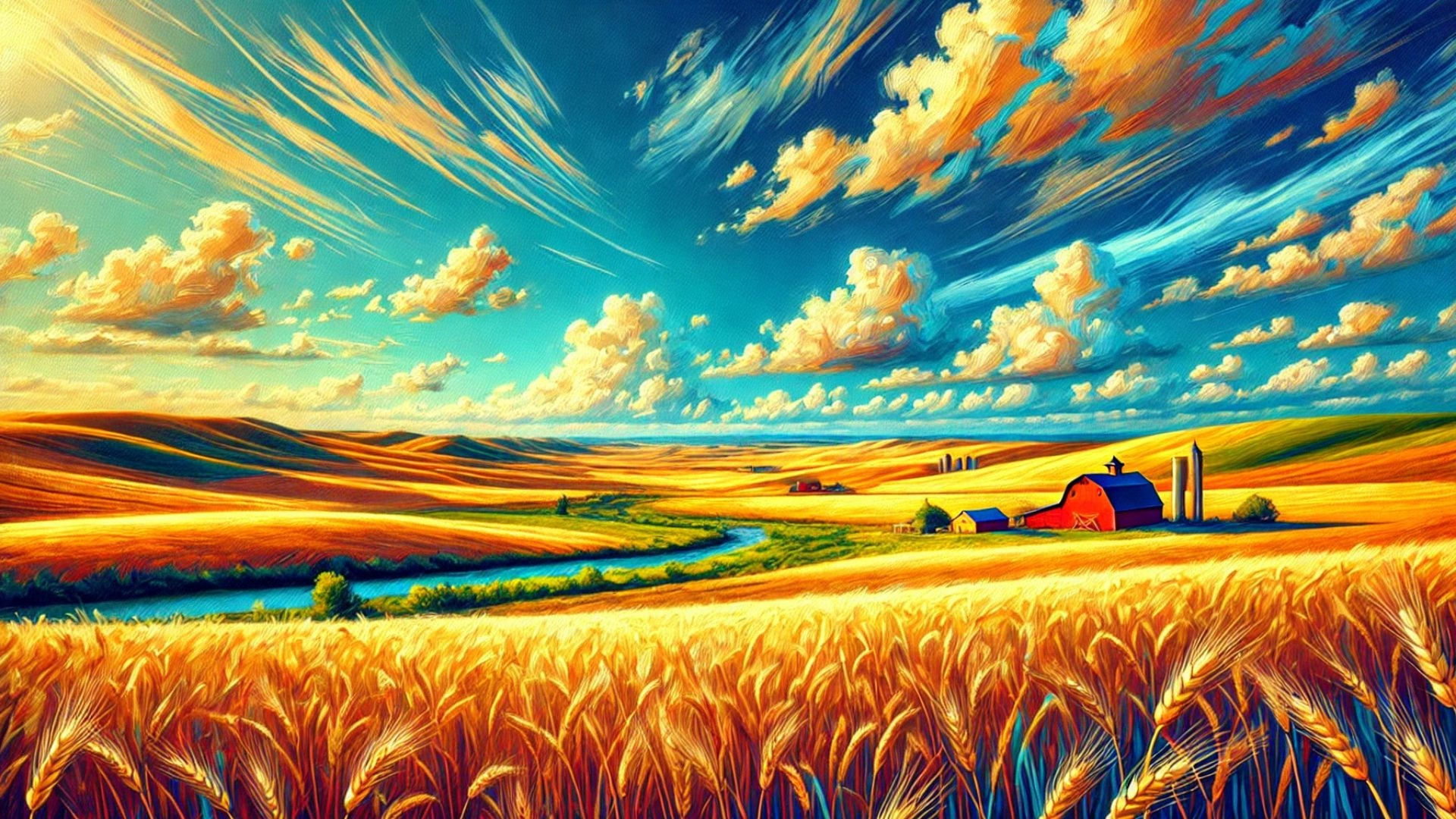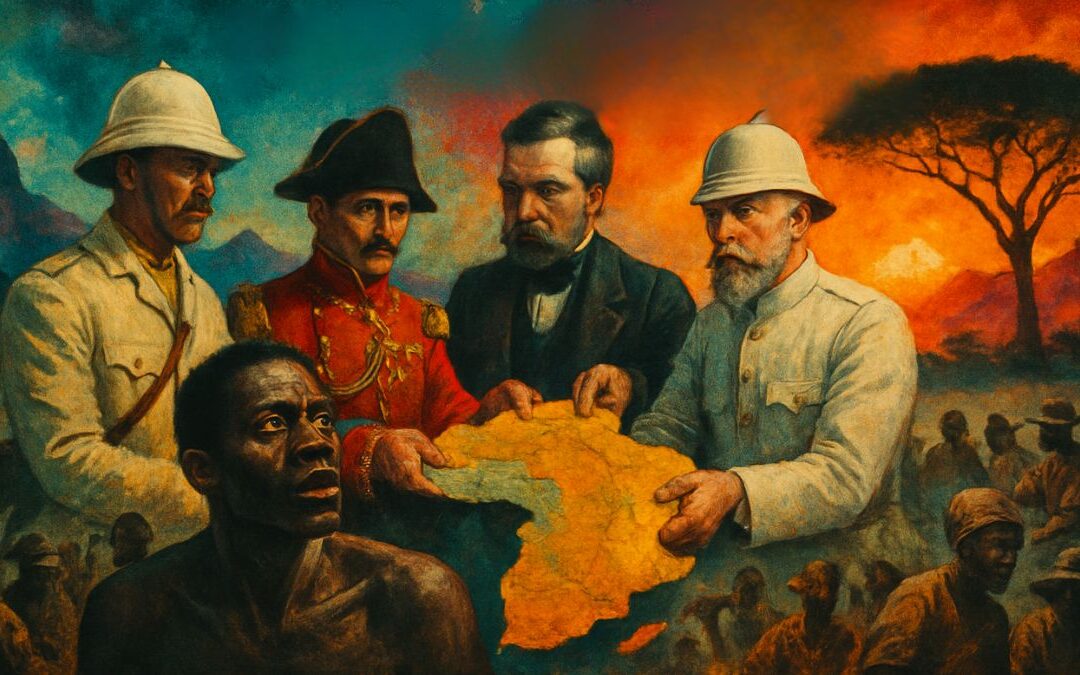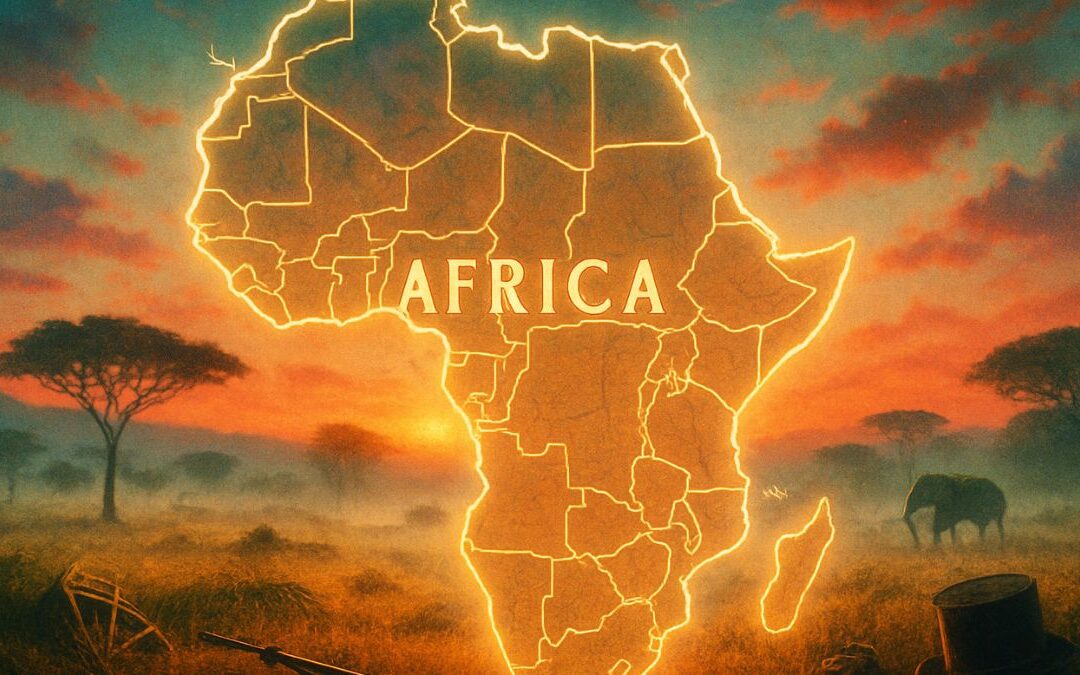Across vast swaths of North America, Eurasia, and other parts of the globe, prairies have long been celebrated as nature’s great granaries—the Earth’s breadbasket. These expansive grasslands, characterized by rolling fields, rich soils, and an abundance of native grasses, not only provide a home to diverse flora and fauna but also serve as a vital source of agricultural productivity. In this article, we will explore the natural history, ecological significance, and socio-economic importance of prairies. We will examine how these unique landscapes have shaped human civilization, contributed to food security, and continue to inspire scientific research and conservation efforts.
The Natural History of Prairies
Prairies are the product of millions of years of geological and climatic evolution. Formed by the interplay of tectonic activity, glacial movements, and long-term climate patterns, these grasslands emerged in regions where the conditions favored the growth of hardy grasses over dense forests. The periodic fires and grazing by large herbivores, such as bison and antelope, have helped maintain the open, sun-drenched expanses that define the prairie. Their deep, fibrous root systems not only stabilize the soil but also enable these plants to thrive in regions with variable rainfall.
One of the defining features of prairies is their soil—a rich, dark, organic substrate often referred to as “mollisol.” This nutrient-dense layer is a result of thousands of years of decomposing plant material and is considered among the most fertile soils on Earth. Such conditions have made prairies ideal for agriculture, where crops like wheat, corn, and soybeans now flourish.
Ecological Significance
Beyond their role in agriculture, prairies are vital ecosystems that support a wide range of wildlife. The open landscape offers shelter and resources for numerous species, from ground-nesting birds to burrowing mammals and a myriad of insects. The biodiversity of prairie ecosystems plays a critical role in pollination, pest control, and nutrient cycling—processes essential for ecosystem stability.
Prairies also function as significant carbon sinks. The deep roots of prairie grasses sequester carbon dioxide, helping to mitigate the effects of climate change. As conservation efforts expand, researchers are increasingly focusing on prairies not only for their agricultural potential but also for their role in maintaining environmental balance.
Socio-Economic Importance
Historically, the prairies have been central to the development of human civilization. Native American tribes thrived on these lands, developing intricate cultures that were closely tied to the rhythms of the natural world. With the arrival of European settlers, prairies became the stage for large-scale agriculture and livestock rearing. The fertile soils contributed immensely to the food security of emerging nations, earning prairies the title of the Earth’s breadbasket.
Today, the economic value of prairies extends well beyond crop production. They are integral to regional economies, supporting not only agriculture but also industries such as biofuel production and ecotourism. The stewardship of prairie lands involves a balance between development and conservation. Modern agricultural practices, combined with sustainable land management techniques, aim to protect these vital ecosystems while maintaining their productivity.
Challenges and Conservation
Despite their importance, prairies face significant challenges. Urbanization, industrial agriculture, and climate change have led to extensive habitat loss and fragmentation. With more than 80% of the original prairies in some regions converted to farmland or urban areas, the remaining patches are under constant threat. Loss of habitat not only reduces agricultural productivity but also jeopardizes biodiversity and the ecosystem services that prairies provide.
Conservation efforts are now focused on restoring degraded prairie lands and implementing sustainable agricultural practices that preserve soil health and biodiversity. Programs that encourage the planting of native grasses and the management of grazing practices are vital to ensuring that these ecosystems continue to function as the world’s breadbasket. Furthermore, prairie restoration has emerged as a promising strategy in climate change mitigation, as revitalized prairies can sequester significant amounts of carbon dioxide.
The Cultural Impact of Prairies
The prairies have also left an indelible mark on literature, art, and popular culture. The wide-open spaces and the golden hues of the grasses have inspired countless works of art and poetry. These landscapes evoke a sense of freedom, resilience, and continuity—a reminder of nature’s vast, unyielding power and beauty. For many, the prairie is not just a source of sustenance but a symbol of hope and renewal.
This cultural legacy is reflected in the stories and traditions of the people who have lived and worked on these lands. From the folklore of Native American tribes to the narratives of pioneers and modern-day farmers, the prairie represents both struggle and abundance. Its enduring appeal lies in its ability to nourish the body, stimulate the mind, and soothe the soul.
The Future of the Prairies
Looking ahead, the future of the prairies depends on our ability to balance agricultural demands with environmental sustainability. Advances in technology and land management are paving the way for more efficient and sustainable farming practices. Precision agriculture, for instance, optimizes the use of resources such as water and fertilizers, reducing environmental impact while boosting crop yields. In parallel, conservation initiatives are working to reclaim lost prairie lands and protect the remaining fragments from further degradation.
The integration of modern science with traditional knowledge offers a promising path forward. By learning from the past and applying innovative practices, we can ensure that prairies continue to serve as the Earth’s breadbasket for generations to come. This synergy between old and new holds the key to preserving these majestic landscapes and the life they support.
Conclusion
Prairies are much more than vast, windswept expanses of grass; they are living, breathing ecosystems that have nurtured life for millennia. They have shaped human history, provided the foundation for modern agriculture, and continue to play a crucial role in ecological balance. As the Earth’s breadbasket, prairies remind us of the intimate connection between the natural world and our own survival. By understanding their complexity, embracing sustainable practices, and fostering a deep respect for these fertile lands, we honor not only the legacy of the prairies but also our responsibility to safeguard the planet for future generations.
Reading Comprehension Quiz
Let’s Talk | Listening
Listening Transcript: Please don’t read the transcript before you listen and take the quiz.
Let’s take a moment to have an open conversation about prairies—those expansive grasslands that many of us see in photographs but might not fully understand. Think about the vast, undulating fields that stretch as far as the eye can see, where golden waves of grass move gently in the wind. These prairies are not just scenic backdrops; they are the Earth’s breadbasket, rich in history, culture, and ecological importance.
I often reflect on the role prairies have played in human history. Long before modern agriculture transformed these lands, indigenous peoples cultivated deep respect for these areas, understanding that the prairies were more than just fields; they were living ecosystems. They observed how the native grasses, nourished by the deep, fertile soils, not only sustained their communities but also supported a wide array of wildlife. This deep connection between the land and the people is something that modern society sometimes forgets amid rapid urban development and technological advancement.
Now, consider the economic impact of prairies. For many regions, these grasslands are the foundation of local economies. They produce a significant portion of the world’s grain and support livestock rearing, which in turn fuels industries ranging from food production to biofuels. Yet, with all this utility comes a challenge: balancing agricultural productivity with the need to conserve the delicate ecosystems that make prairies so unique. How do we maintain the health of the soil, protect biodiversity, and continue to feed millions without compromising the very environment that sustains us?
One aspect that fascinates me is the resilience of prairie ecosystems. Despite facing threats from urban sprawl, industrial farming, and climate change, prairies have endured for millennia. Their ability to recover from disturbances, such as periodic fires and grazing, speaks to the intricate balance of nature. It prompts us to ask: What can we learn from the prairies about sustainability? Perhaps the answer lies in the very practices that have maintained these lands—adaptive management, respect for natural cycles, and an understanding of local conditions.
Another point worth pondering is the cultural influence of prairies. Many artists and writers have drawn inspiration from the prairies’ vast, open spaces. There is something inherently liberating about a landscape that seems to stretch into infinity—a reminder that the world is larger and more interconnected than our daily routines might suggest. How often do we allow ourselves to be moved by the natural world? And in what ways can we integrate that sense of wonder into our modern lives?
In our current era, when the global population is growing and the demand for food is increasing, the sustainability of prairies is more important than ever. The development of modern agricultural techniques has greatly enhanced our ability to produce food, but it has also put pressure on these ecosystems. The challenge, then, is not simply to harvest more but to do so in a way that protects and rejuvenates the land. Imagine a future where advanced technology and traditional ecological knowledge work hand in hand—where farmers not only maximize yields but also engage in practices that restore soil fertility and foster biodiversity.
I also think about the social implications of prairies. For many communities, these lands are part of their heritage. Stories passed down through generations recount the struggles and triumphs of life on the prairie. They speak of hard work, community spirit, and an enduring connection to the land. When we discuss prairies, we are not just talking about physical landscapes; we are also exploring the human spirit—the drive to cultivate, to sustain, and to find beauty in the simplest things.
Let’s consider our own lives for a moment. How often do we take for granted the basic resources that allow us to thrive? The prairies remind us that beneath the surface of our modern cities lies a natural world that has nurtured life for thousands of years. They call us to appreciate the intricate balance between nature and human progress. As we continue to develop and innovate, it is essential that we remember our roots—quite literally—and work to preserve the lands that have sustained civilizations.
In wrapping up this reflection, I invite you to think about the practical implications of prairie conservation. What small changes can you make in your own life that contribute to a more sustainable use of natural resources? Whether it’s supporting local agriculture, reducing waste, or advocating for environmental policies, every action counts. By elevating our understanding of prairies from mere fields of grass to dynamic, living systems, we can foster a deeper respect for the Earth and ensure that these vital landscapes continue to nourish both our bodies and our souls.
Listening Comprehension Quiz
Let’s Learn Vocabulary in Context
When we discuss prairies—often called the Earth’s breadbasket—there are several key vocabulary words and phrases that help us articulate the richness and complexity of these landscapes. One of the first words that comes to mind is fertile. This adjective describes soil that is rich in nutrients and ideal for plant growth. When we say a prairie has fertile soil, we are acknowledging its ability to sustain abundant vegetation and, ultimately, support agriculture on a grand scale.
Another term integral to our discussion is grassland. This word refers to large open areas dominated by grasses rather than trees. Grasslands, such as prairies, are not only ecologically diverse but also historically significant as the settings where indigenous cultures thrived and modern agriculture took root.
The word biodiversity is also essential. It encompasses the variety of life—plants, animals, microorganisms—found in an ecosystem. In the context of prairies, biodiversity speaks to the intricate web of life that makes these regions resilient and ecologically vibrant. Coupled with this is the concept of carbon sequestration, which is the process by which natural systems, like prairie soils and native grasses, absorb and store carbon dioxide from the atmosphere. This process is crucial in mitigating the effects of climate change.
Sustainable is a term that has gained tremendous importance in today’s discourse. It describes practices that meet current needs without compromising the ability of future generations to meet theirs. Sustainable farming, for instance, involves methods that protect soil health, conserve water, and maintain ecological balance. In the context of prairies, sustainable practices ensure that these lands remain productive and healthy over the long term.
Another word that enriches our discussion is ecosystem. An ecosystem refers to a community of living organisms interacting with each other and their physical environment. Prairies are prime examples of dynamic ecosystems, where every element—from the smallest insect to the largest grazing animal—plays a role in maintaining balance.
Resilience is equally important. It denotes the capacity of an ecosystem or community to recover from disturbances, whether they are natural or human-induced. Prairies have shown remarkable resilience through cycles of drought, fire, and grazing, adapting to changing conditions while continuing to support life.
Then there is heritage. In this context, heritage refers to the cultural, historical, and ecological legacy that prairies represent. This term reminds us that prairies are not just economic resources; they are also part of our collective memory and identity. They have shaped local traditions and continue to inspire art, literature, and community values.
Restoration is a key process aimed at returning degraded landscapes to a healthy state. In prairie conservation, restoration might involve reintroducing native species, managing invasive plants, or implementing controlled burns to mimic natural fire cycles. This term embodies hope and renewal—central themes in discussions about environmental conservation.
Conservation itself is the practice of protecting and managing natural resources to prevent exploitation or degradation. It is a principle that underlies efforts to maintain the productivity and biodiversity of prairies for future generations. Alongside conservation is management, a term that refers to the strategies and practices used to steward natural resources effectively. This involves balancing agricultural needs with ecological health.
Lastly, innovation plays a vital role in ensuring that modern agricultural practices harmonize with the natural characteristics of prairie ecosystems. Innovation in this context is about applying new technologies and methodologies to improve efficiency while reducing environmental impact.
These words—fertile, grassland, biodiversity, carbon sequestration, sustainable, ecosystem, resilience, heritage, restoration, conservation, management, and innovation—are not merely technical terms; they are lenses through which we can appreciate the complexity and value of prairies. When you incorporate these words into your daily conversations, you begin to see how they connect to larger themes of growth, renewal, and balance. They remind us that nature is multifaceted and that our interactions with it require both reverence and practical action. Whether discussing agricultural practices, environmental challenges, or cultural legacies, this vocabulary enriches our dialogue and encourages a deeper understanding of how prairies—our planet’s breadbasket—nourish both the earth and human civilization.
Vocabulary Quiz
Let’s Discuss & Write
Discussion Questions:
- How have prairies shaped the cultural and agricultural history of your region?
- In what ways can modern technology be integrated with traditional land management to preserve prairie ecosystems?
- How does the concept of sustainability influence your views on agriculture and environmental conservation?
- What lessons can be learned from prairie restoration projects that might be applied to other ecosystems?
- How can communities balance economic growth with the need to protect natural landscapes?
Writing Prompt:
Reflect on a personal experience or a community initiative that highlighted the importance of sustainable land management. Write an essay that begins by describing the setting—perhaps a local prairie or a rural area—then narrate how sustainable practices or conservation efforts made a difference. Consider discussing specific strategies, such as restoration projects or innovative farming techniques, and reflect on the challenges and successes encountered. Use phrases like “nurturing the land,” “balancing progress with preservation,” or “a legacy of sustainability.” Your essay should include concrete examples, personal reflections, and a discussion on how these experiences have influenced your perspective on environmental stewardship and community well-being.










0 Comments